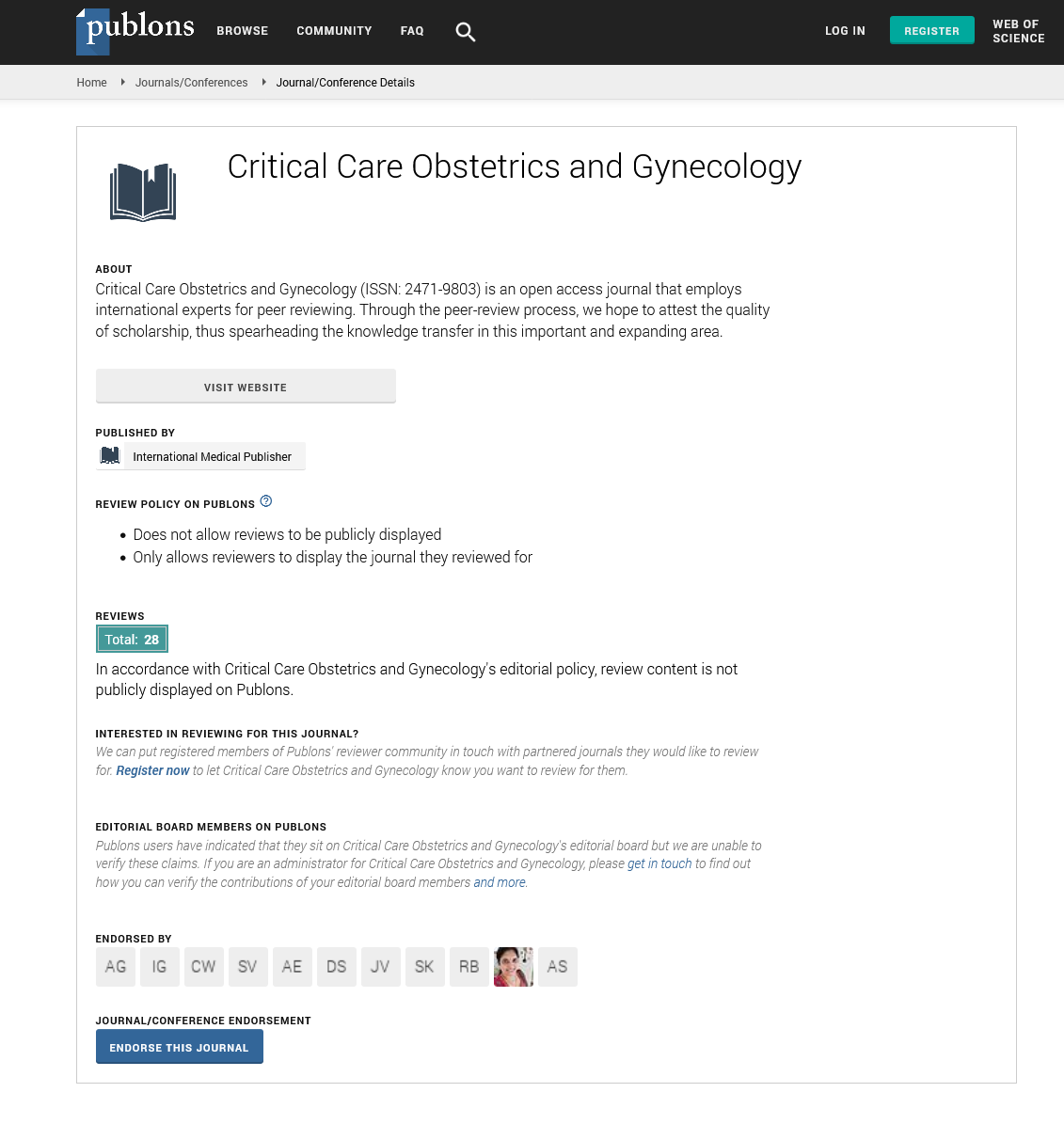Abstract
Updates in Management of Hyperemesis Gravidarum
Hyperemesis gravidarum is the most severe form of nausea and vomiting during pregnancy and is characterized by intractable nausea and vomiting that leads to dehydration, electrolyte and metabolic disturbances, and nutritional deficiency that may require hospitalization. Hyperemesis gravidarum is a clinical diagnosis; most of physicians diagnose it by its typical presentation and exclusion of other causes of nausea and vomiting in the pregnant woman. Onset of vomiting typically starts between 6 and 8 weeks’ gestation and peaks by 12 weeks. It is a disease of high prevalence among pregnant women. It is a common experience affecting 50% to 90% of all women. It is the most common indication for hospitalization during the first half of pregnancy. Nausea and vomiting are usually limited to first trimester but 20% of women continue throughout pregnancy. It causes economic burden upon families and countries. There are many lines of treatment of Hyperemesis gravidarum, some lines are well studied. Studies regarding drug safety were done to determine incidence of congenital anomalies in babies of mothers received these drugs. Other lines are still experimental. Recent literature regarding management of Hyperemesis gravidarum support using saline or ringer’s fluid as a first line for fluid replacement, Antihistamines are the main antiemetic that used in the treatment of those cases, Ondansetron is a promising drug regarding its safety and its efficacy. Use of Proton pump inhibitors should be taken in mind in cases that are resistant to treatment with evidence of H. pylori infection. No current evidence support use of pyridoxine but thiamine and Folic acid should be replaced to avoid consequences of their deficiencies. Steroids are given only in refractory cases. Termination of pregnancy is the last line of treatment in these cases. Actually those patients need psychotherapy especially when they consider termination of pregnancy. Many experimental lines need further researches; ginger and acustistimulation are the most promising experimental lines of treatment.
Author(s):
Abanoub Gabra
Abstract | Full-Text | PDF
Share this

Google scholar citation report
Citations : 148
Critical Care Obstetrics and Gynecology received 148 citations as per google scholar report
Critical Care Obstetrics and Gynecology peer review process verified at publons
Abstracted/Indexed in
- Google Scholar
- China National Knowledge Infrastructure (CNKI)
- WorldCat
- Publons
- Geneva Foundation for Medical Education and Research
- Secret Search Engine Labs
Open Access Journals
- Aquaculture & Veterinary Science
- Chemistry & Chemical Sciences
- Clinical Sciences
- Engineering
- General Science
- Genetics & Molecular Biology
- Health Care & Nursing
- Immunology & Microbiology
- Materials Science
- Mathematics & Physics
- Medical Sciences
- Neurology & Psychiatry
- Oncology & Cancer Science
- Pharmaceutical Sciences


